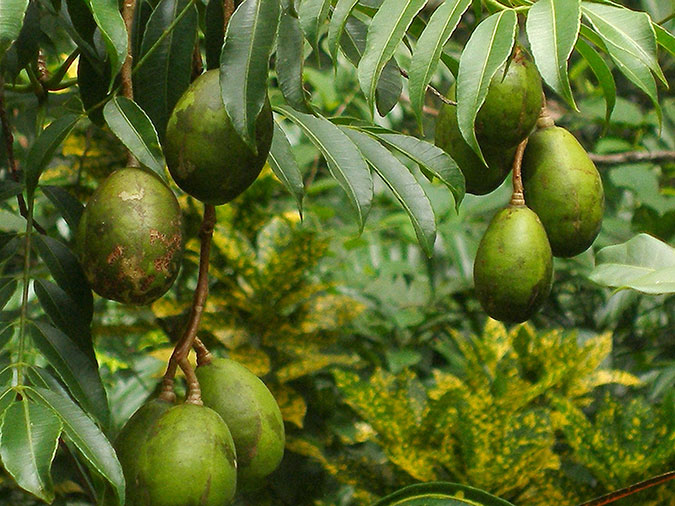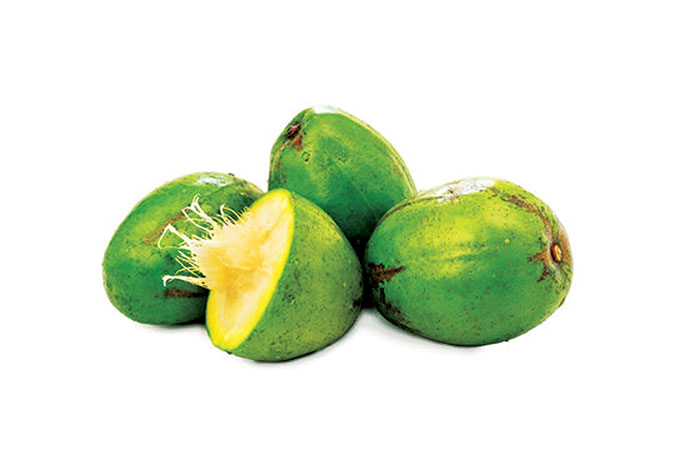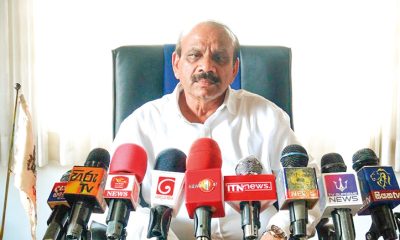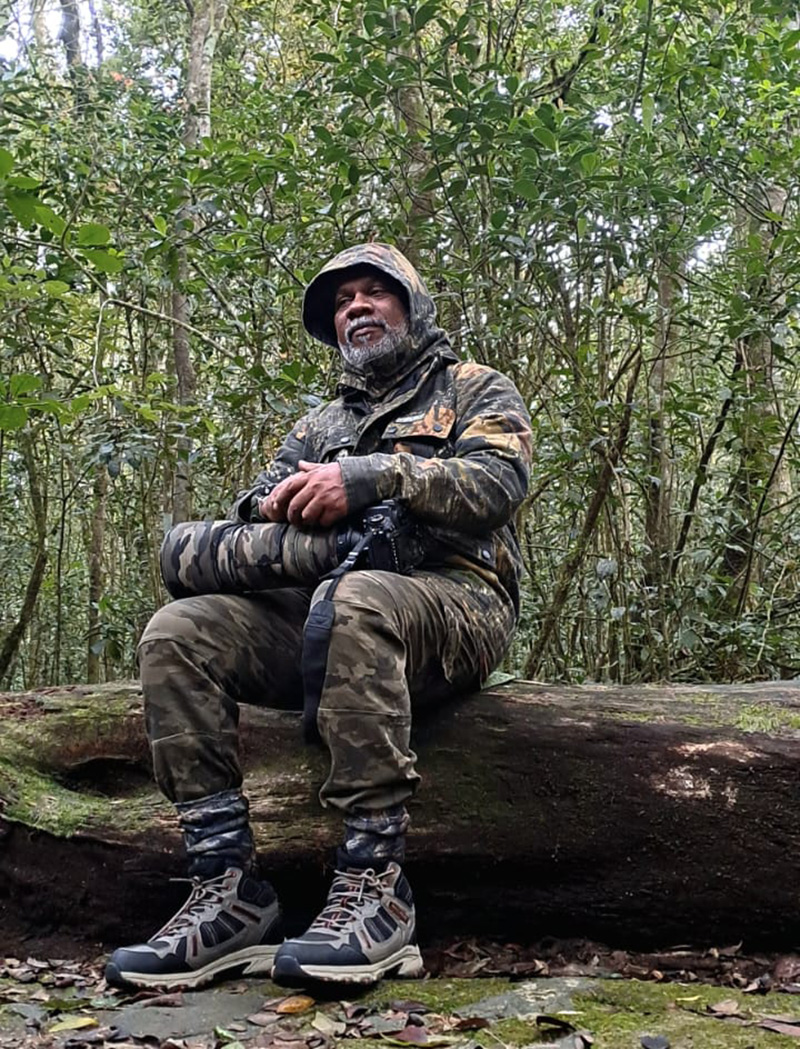Life style
Ambarella Fruit : Discover The Wonderful

Ambarella, scientifically termed as Spondias dulcis, is a tropical fruit-bearing tree that goes by several common names including June plum, golden apple, dwarf golden plum. This succulent summer produce confers numerous advantages for human health, such as enhancing immune system functions, preventing heart ailments like atherosclerosis, myocardial infarction or heart attack, enriching skin texture, maintaining optimal vision and remedying gut problems.
The ambarella crop thrives in hot, humid climates in tropical zones. It grows extensively in warmer parts of Asia and Africa, in many countries including India, Sri Lanka, Malaysia, Thailand, Indonesia, Jamaica and Barbados. The ambarella tree is usually very tall, reaching a height of up to 20 m with branches that hold deciduous pinnate leaves. In the blooming period, the tree bears small, bright white-coloured flowers, that eventually bud into oval, green, or yellow fruits. The ambarella fruit is popular summer produce in many regions in India, much like the ubiquitous mangoes. The raw, green fruits are a bit sour in taste, hence they are sun-dried and made into jams and pickles, or eaten with salt and spices. The ripe yellow fruits have a delicious, crispy inner flesh, with a fibrous pit i.e a large seed in the center and are enjoyed in fruit salads as well as puddings and pastries.
Ambarella fruits display an impressive nutritional profile, being abundant in water content, proteins, healthy fats, natural sugars as well as vitamins C, A. Moreover, this exotic summer harvest is a treasure trove of essential minerals like calcium, phosphorous, iron besides potent antioxidants namely flavonoids, terpenoids, tannins, saponins and cardiac glycosides.
It comes as no surprise then that ambarella fruits are sought out and consumed by many, for their marvellous health incentives, in addition to their immense therapeutic potential. Ambarella Fruit Health Benefits:

Augments Heart Function
Ambarella is blessed with the goodness of cardiac glycoside group of antioxidants. These plant compounds help to maintain normal blood pressure levels, thereby averting the risk of hypertension or hypotension. They also enable smooth flow of nutrients via blood vessels, preventing instances of bad LDL cholesterol clogging in the arteries, thus effectively keeping cardiac ailments at bay. Also Check Out: Amazing Foods To Reduce LDL Cholesterol – Infographic
Bolsters Immunity
Being inherently rich in vitamin C content, besides iron, ambarella works wonders to maintain defense mechanisms in the body. Eating the ambarella fruit or even having a side of a pickle with meals assists in the synesis of healthy white blood cells, required for combating foreign invaders and infections in the body. Vitamin C also improves the absorption of iron in the bloodstream, essential for healthy red blood cell synthesis as well as preventing anaemia and fatigue.
Cures Digestive Issues
Ambarella is packed with beneficial antioxidants such as flavonoids, terpenoids and tannins. These work in synergy to foster easy digestion, besides treating a host of common gastrointestinal complaints like bloating, indigestion, flatulence. The best time to eat ambarella is before a heavy meal of breakfast or lunch, to help activate gastric juices in the stomach and facilitate smooth assimilation of food.
Improves Eyesight
Bestowed with profuse amounts of vitamin A, ambarella fruits can be consumed regularly as part of the diet to help promote healthy eyesight in children and adults. Squeezing the pulp into a juice, adding a few slices to a salad, or simply biting into the ripe June plums on a regular basis lowers the risk of age-related macular degeneration (AMD) and other vision problems in the later years.
Combats Skin Infections
The wealth of antimicrobial agents in ambarella fruit tackle common skin conditions such as dryness, psoriasis, rosacea and other blisters and wounds. Moreover, the antioxidants in June plum stimulate collagen synthesis, thereby slowing down ageing and diminishing wrinkles and fine lines.
Health Benefits of Ambarella
Leaves and the bark of ambarella are widely used as a therapeutic agent as it contains flavonoids, saponin and tannins. Fruit is dense in nutrients and improves overall health. One serving of ambarella fruit provides 48Kcal of energy, 1 gram of protein, 12 grams of carbohydrate, 233 IU of vitamin A, 30mg of vitamin C, 15 mg of calcium, 3 mg of iron and 22 grams of phosphorus. The fruit also contains dietary fibre and Vitamin B complex constituents like thiamine and riboflavin. Listed below are few of the health benefits of Ambarella
Helps Treat Cough
Leaves extract are quite beneficial for treating cough. About 3 or 4 fresh leaves of ambarella tree is boiled in two cups of water and allowed to stand for few minutes. The concoction is strained and usually taken with honey.
Fruit can also be used to treat cough. Two or three pieces of the ambarella fruit are shredded and the water is squeezed. A pinch of salt can be added to the extract and consumed thrice a day to relieve cough.
Controlling cholesterol levels
The fruit consists of good amount of vitamin C which helps to metabolize cholesterol into bile acids, which may have implications for blood cholesterol levels and the incidence of gallstones. So this fruit with vitamin C useful to control your cholesterol levels.
Life style
What I Do, What I Love: A Life Shaped by Art, Wilderness and Truth

In a country where creative pursuits are often treated as indulgences rather than vocations, Saman Halloluwa’s journey stands apart — carved patiently through brushstrokes, framed through a camera lens, and articulated through the written word. Painter, wildlife and nature photographer, and independent environmental journalist, Halloluwa inhabits a rare space where art, ecology and social responsibility converge.
His relationship with art began not in galleries or exhibitions, but in a classroom. From his school days, drawing was not simply a subject but an instinct — a language through which he learned to observe, interpret and respond to the world around him. Under the guidance of two dedicated mentors, Ariyaratne Guru Mahathaya and Gunathilaka Guru Mahathaya, he honed both skill and discipline. Those early lessons laid the foundation for a lifelong engagement with visual storytelling.

“His work navigates between traditional Sinhala artistic sensibilities, abstract compositions and expansive landscapes.”
 That commitment eventually materialised in two solo art exhibitions. The first, held in 2012, marked his formal entry into Sri Lanka’s art scene. The second, staged in Colombo in 2024, was a more mature statement — both in content and confidence. Featuring nearly fifty paintings, the exhibition drew an encouraging public response and reaffirmed his place as an artist with a distinct visual voice.
That commitment eventually materialised in two solo art exhibitions. The first, held in 2012, marked his formal entry into Sri Lanka’s art scene. The second, staged in Colombo in 2024, was a more mature statement — both in content and confidence. Featuring nearly fifty paintings, the exhibition drew an encouraging public response and reaffirmed his place as an artist with a distinct visual voice.
His work navigates between traditional Sinhala artistic sensibilities, abstract compositions and expansive landscapes. There is restraint in his use of form and colour, and an underlying dialogue between memory and space. Yet, despite positive reception, Halloluwa speaks candidly about the structural challenges faced by artists in Sri Lanka. Recognition remains limited; fair valuation even rarer.
“This is not merely an artistic issue,” he observes. “It is a social and economic problem.”
In Sri Lanka, art is often viewed through the lens of affordability rather than artistic merit. Many approach a painting by first calculating the contents of their wallet, not the value of the idea or labour behind it. In contrast, he notes, art in Europe and many other regions is treated as cultural capital — an investment in identity, history and thought. Until this mindset shifts, local artists will continue to struggle for sustainability.
The decisive push toward wildlife photography came from Professor Pujitha Wickramasinghe, a close friend who recognised both Halloluwa’s observational skills and his affinity with nature. From there, the journey deepened under the mentorship of senior wildlife photographer Ravindra Siriwardena.
Both mentors, he insists, deserve acknowledgment not merely as teachers but as ethical compasses. In a field increasingly driven by competition and spectacle, such grounding is invaluable.
Wildlife photography, Halloluwa argues, is among the most demanding visual disciplines. It cannot be improvised or rushed. “This is an art that demands restraint,” he says.
Among all subjects, elephants hold a special place in his work. Photographing elephants is not merely about proximity or scale, but about understanding behaviour. Observing social patterns, movement, mood and interaction transforms elephant photography into a constantly evolving challenge. It is precisely this complexity that draws him repeatedly to them.
Halloluwa is cautiously optimistic about the current surge of interest in wildlife photography among Sri Lankan youth. Opportunities have expanded, with local and international competitions, exhibitions and platforms becoming more accessible. However, he issues a clear warning: passion alone is not enough
Sri Lanka, he believes, is uniquely positioned in the global nature photography landscape. Few countries offer such concentrated biodiversity within a compact geographical area. This privilege, however, carries responsibility. Nature photography should not merely aestheticise wildlife, but foster respect, aware ness and conservation.
Parallel to his visual work runs another equally significant pursuit — environmental journalism. For the past seven to eight years, Halloluwa has worked as an independent environmental journalist, giving voice to ecological issues often sidelined in mainstream discourse. His entry into the field was guided by Thusara Gunaratne, whose encouragement he acknowledges with gratitude.
An old boy of D.S. Senanayake College, Colombo, Halloluwa holds a Diploma in Writing and Journalism from the University of Sri Jayewardenepura and has completed journalism studies at the Sri Lanka Press Institute. He is currently pursuing an Advanced Certificate in Wildlife Management and Conservation at the Open University of Sri Lanka — a testament to his belief that learning must remain continuous, especially in a rapidly changing ecological landscape.
Outside his professional life, he enjoys cricket, rugby and badminton. Yet even leisure intersects with responsibility. He is a founding member and former president of the D.S. Senanayake College Old Boys’ Wildlife Forum, an active member of Wild Tuskers Sri Lanka, and a contributor to several independent environmental and wildlife volunteer organisations. In an era dominated by speed, spectacle and short attention spans, Saman Halloluwa’s journey unfolds differently. It is deliberate, reflective and rooted in values. Through art, he captures memory and form. Through photography, he frames life beyond human control. Through journalism, he asks uncomfortable but necessary questions.
“What I do, what I love” is not fashion here.
It is conviction — patiently lived, quietly asserted, and urgently needed in a country still learning how to value its artists, its environment and its truth.
By Ifham Nizam ✍️
Life style
Shaping the future of style

Ramani Fernando Sunsilk Hair and Beauty Academy
Ramani Fernando Sunsilk Hair and Beauty Academy marked their graduation of their latest cohort of aspiring hair professionals in a ceremony held at Kingsbury Hotel.
For over two decades, the Ramani Fernando Sunsilk Hair and Beauty Academy has stood as a beacon of excellence in beauty education in Sri Lanka. Founded by industry icon Ramani Fernando, the Academy has built a reputation for producing highly skilled professionals who go on to make their mark in salons, both locally and internationally. As the newly minted graduates step out into the world, they carry forward not just certificates, but also the promise of creative authority and personal empowerment.
The chief guest for the occasion was Rosy Senanayake, a long-standing supporter of the Academy’s mission. Addressing the graduates her message echoed her enduring belief that the beauty industry is not merely about aesthetic but about. confidence, self-worth and future leaders.
Over months of rigorous training, these young professionals honed their skills in cutting colouring, styling and contemporary artistry readying themselves to set trends rather than follow them.
Each graduate walked the stage with confidence, their dedication signalling a promising future for Sri Lanka’s beauty and fashion industry! With this new generation of stylists preparing to raise the standard of professional hairstyling.
Ramani Fernando, addressing the audience reflected on the academy’s mission to cultivate not only skills but vision and confidence in every student.
She urged the graduates to embrace continuous learning to take risks with creativity .The world of beauty is ever evolving, stay curious, stay bold and never underestimate the power of your talent, she added emphasising the importance of confidence, discipline and passion in carving a successful career in shaping the future of style.
These graduates are stepping into a world of endless possibilities. They are future of the country, who will carry a forward legacy of creativity. Behind every successful graduate at Sun silk Hair Academy stands a team dedicated to excellence. While Ramani Fernando serves as a visionary Principal and it is Lucky Lenagala, her trusted person who ensures that the academy runs seemingly.
From overseeing training sessions to guiding students, through hands on practice, Lucky plays a pivotal role in shaping the next generation of hairstylists.
Kumara de Silva, who has been the official compere Ramani’s, Hair graduation ceremony, from inception has brought energy, poise and professionalism. The Sunsilk Hair Academy is a celebration of talent and mentor ship for the graduates stepping confidentially into the next chapter of their careers, ready to make their mark on Sri Lanka beauty landscape
Pix by Thushara Attapathu
By Zanita Careem ✍️
Life style
Capturing the spirit of Christmas

During this season, Romesh Atapattu’s Capello Salon buzzes with a unique energy – a blend of festive excitement and elegance. Clients arrive with visions of holiday parties, office soirees, seeking looks that capture both glamour and individuality. The salon itself mirrors this celebrity mood. Warm lights, tasteful festive décor create an atmosphere where beauty and confidence flourish.
Romesh Atapattu himself curates the festive décor, infusing the space with his signature sense of style. His personal eye ensures that the décor complements the salon’s modern interiors.
As Colombo slips effortlessly into its most glamorous time of year, the Christmas season brings with it more than twinkling lights and celebrity soirees – it signals a transformation season at salons across the city. Capello salons are no exception.
At the heart of this festive beauty movement is Romesh Atapattu of Capello salons, a name synonymous with refined hair artistry, modern elegance and personalised style.
Christmas is about confidence and celebration. Romesh believes ‘People want to look their best without losing who they are”. Our role is to enhance, not overpower. This philosophy is evident in the salon’s seasonal approach.
Beyond trends, what sets Atapattu apart is the attention to individuality. Each consultation is treated as a creative collaboration – face shape, lifestyle, hair texture and personal style all play a role in creating the best for Romesh.
Stepping into Romesh’s salon during the Christmas season is an experience in itself. The space hums with festive energy while maintaining an atmosphere of calm sophistication.
The décor embraces the Christmas spirit with understated elegance. Tastefully adorned décor, beautiful Xmas tree, soft gold and ivory tones, and gentle hints of red are woven seamlessly into the salon’s contemporary design.
His staff, known for their warmth and professionalism also plays a key role in shaping the salon’s atmosphere—friendly, stylish and always welcoming. The Capello staff combine skill and creativity to deliver results that have a lasting impression.
Beyond trends, what sets Romesh Atapattu apart is the attention to individuality. Each consultation is treated as a creative collaboration – face shape, lifestyle, hair texture and personal style all play a role.
He is a professional who blends technical mastery with a deeply personal approach to style. His dedicated team of skilled professionals, operate with quiet confidence ensuring styles that create an atmosphere of trust, turning every appointment into a personalised and memorable experience.
(ZC) ✍️
Pic by Rohan Herath
-

 News6 days ago
News6 days agoMembers of Lankan Community in Washington D.C. donates to ‘Rebuilding Sri Lanka’ Flood Relief Fund
-

 News4 days ago
News4 days agoBritish MP calls on Foreign Secretary to expand sanction package against ‘Sri Lankan war criminals’
-

 Features6 days ago
Features6 days agoGeneral education reforms: What about language and ethnicity?
-

 News6 days ago
News6 days agoSuspension of Indian drug part of cover-up by NMRA: Academy of Health Professionals
-

 Sports4 days ago
Sports4 days agoChief selector’s remarks disappointing says Mickey Arthur
-

 News3 days ago
News3 days agoStreet vendors banned from Kandy City
-

 Editorial6 days ago
Editorial6 days agoA very sad day for the rule of law
-

 News6 days ago
News6 days agoUS Ambassador to Sri Lanka among 29 career diplomats recalled



















